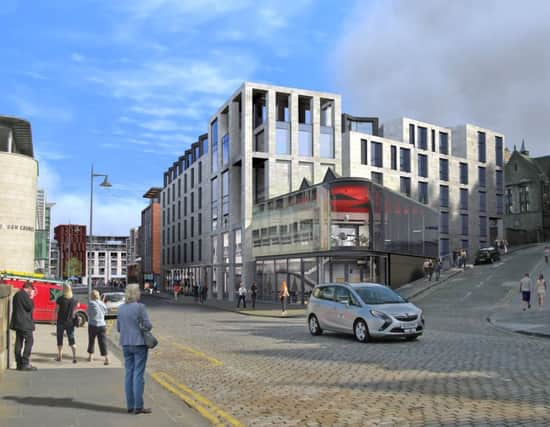Brian Ferguson: Reasons for arts optimism in Edinburgh


But I retain a close affection for a pile of glossy magazines mapping out various visions and blueprints for the city of Edinburgh.
They’ve been joined by a recent arrival in the form of the latest issue of Invest Edinburgh, a quarterly magazine produced by the city council, in which no fewer than eight of its 20 pages are devoted to The Edinburgh 12, a new strategy designed to kick-start action at a dozen dormant or stalled development sites across the city.
Advertisement
Hide AdAdvertisement
Hide AdSelected for their “short-term transformational potential”, the sites have some impressive target figures attached to them – an overall value of £2.14 billion, 20,000 jobs, 1,600 hotel bedrooms and 1,650 homes. But it is also striking that many of these same sites could have featured in a similar document a decade ago.
The redevelopment of the former Edinburgh Royal Infirmary, Donaldson’s School and empty buildings on the south side of St Andrew Square were all supposed to have been completed long ago. Others at Haymarket and Caltongate are finally getting under way after protracted planning wrangles and heritage battles.
But the council’s hit-list of priorities also contains plenty of intrigue for observers of the arts and cultural scene in the city, with several sites holding great potential as new creative hubs – as long as the powers-that-be at the City Chambers show some imagination and encourage bolder thinking from developers.
There have already been encouraging signs over the transformation of the former registry office on Victoria Street and gap sites on the banks of the Union Canal at Fountainbridge to ensure cultural elements are virtually locked in from the beginning, and the public response to the transformation of the run down Market Street arches for the Hidden Door Festival should generate interest in more permanent uses for artists and organisations in the Caltongate development – and persuade its developer to properly accommodate them.
It is heartening to see a huge site at King’s Stables Road, identified more than a year ago as one of the city’s main priorities for a new cultural hub, make it on to the list, raising prospects of a new multi-arts venue being developed.
And there is no reason why the city’s much-vaunted “culture capital” status cannot be written into the plans for other flagship developments, like the St James Quarter, which is earmarked for a large site at the east end of Princes Street and the old Royal High School on Calton Hill.